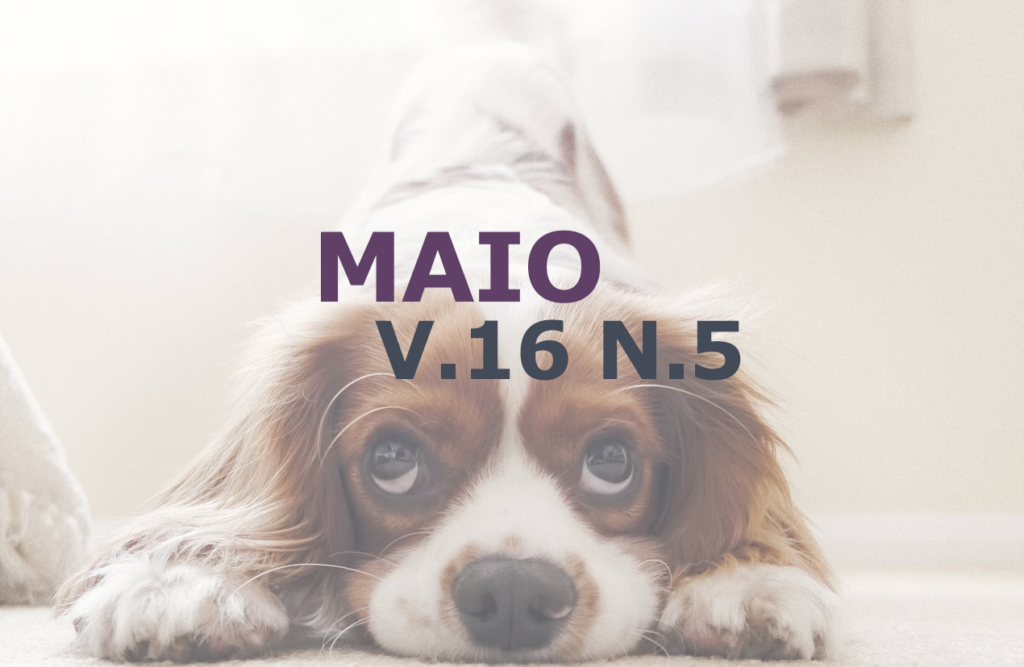Osteosynthesis of lumbosacral fracture/luxation with Schanz pins inserted in the pedicles and polymethylmethacrylate in seven dogs
DOI:
Keywords:
Dog, lumbosacral, fracture, luxation, surgical stabilizationAbstract
Lumbosacral fracture/luxation is a traumatic affection of the spine relatively common in dogs and that presents a certain peculiarity in its conformation, since in most cases there is an oblique fracture of the vertebral body of L7 and cranioventral displacement of the fractured portion of L7 and sacrum, which causes involvement of the cauda equina and, therefore, neurological alterations such as pain, paresis, and urinary/fecal incontinence. The objective of this study was to evaluate in dogs, treated at a Veterinary School Hospital between 2014 and 2020, with this condition and submitted to surgical stabilization with pedicular Schanz pins and polymethylmethacrylate (PMMA), the clinical/neurological signs, complications, and outcomes. Seven dogs with lumbosacral fracture/dislocation were treated, all mixed breed, being six females and one male, on average 31 hours after the occurrence of the trauma. The age of the patients ranged from 11 months to 7 years and the mean weight was 8.56 kg. Of the seven dogs, six had a vertebral body fracture at L7, caused by being hit by a car and one had subluxation between L7-S1, resulting from a fall. The diagnosis was made based on the findings of the neurological examination and plain radiography. The most frequent clinical signs were aggressiveness due to severe pain in the lumbosacral region, paraparesis/absent proprioception in the hind limbs, relaxed anal sphincter and absence of tail movement/flaccidity. In addition to the vertebral injury, concomitant injuries were observed in 71.43% of the patients, such as pelvic, femur and ribs fractures and pulmonary contusion, which led to surgery on average 5.29 days after the trauma, due to the need stabilization of the patient's clinical condition. In three cases, in addition to stabilization surgery, lumbosacral laminectomy was performed for decompression and inspection of the nerve roots. Soon after the surgery there was a significant improvement in pain and the average time for the animals to walk again was 2.7 days. Postoperative care included analgesia, performing bladder massage at least four times a day, changing the position at regular intervals, cleaning the stitches and perianal hygiene due to skin rashes resulting from fecal incontinence. The main sequelae were urinary and fecal incontinence in 57.14% of the animals, followed by lameness of the pelvic limbs in 28.57%. The surgical technique used was effective for vertebral stabilization, but the damage to the pudendal and caudal nerve roots can be irreversible, leading to sequelae, mainly in bladder control, in cases in which the surgery was not performed early.
Downloads
Published
Issue
Section
License
Copyright (c) 2022 Karina Ayaka Yaekashi, Mônica Vicky Bahr Arias

This work is licensed under a Creative Commons Attribution 4.0 International License.
Você tem o direito de:
Compartilhar — copiar e redistribuir o material em qualquer suporte ou formato
Adaptar — remixar, transformar, e criar a partir do material para qualquer fim, mesmo que comercial.
O licenciante não pode revogar estes direitos desde que você respeite os termos da licença. De acordo com os termos seguintes:
Atribuição
— Você deve dar o crédito apropriado, prover um link para a licença e indicar se mudanças foram feitas. Você deve fazê-lo em qualquer circunstância razoável, mas de nenhuma maneira que sugira que o licenciante apoia você ou o seu uso. Sem restrições adicionais
— Você não pode aplicar termos jurídicos ou medidas de caráter tecnológico que restrinjam legalmente outros de fazerem algo que a licença permita.





